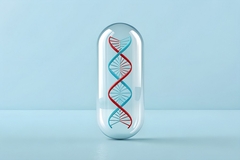UN unveils new global nutrition indicator to combat malnutrition and poor diet

The UN has adopted a new indicator to measure minimum dietary diversity (MDD) as part of its framework to reach Sustainable Development Goal (SDG) 2 — end hunger, achieve food security, and improve nutrition and sustainable agriculture. Nutrition Insight speaks with the humanitarian organization’s agencies, FAO and UNICEF, co-custodians of the tool, to learn about tracking global progress in the fight against malnutrition by assessing the variety of foods consumed by women and children.
The indicator will provide clear data on dietary quality, which is essential in addressing obesity and undernutrition, says FAO. UNICEF adds that the MDD will boost effective policy and programmatic actions to ensure that vulnerable populations have access to diverse, nutrient-rich diets essential for health and development.
Why now?
Akoto Osei, senior nutrition and food systems officer of Food and Nutrition at FAO, explains that dietary diversity was not included as an SDG indicator earlier due to its role in health and human development outcomes.
 The indicator will provide clear data on dietary quality, essential in addressing obesity and undernutrition.“The critical role of healthy diets in achieving health and human development outcomes is well documented and acknowledged by the global scientific and development community. According to the WHO, low-quality diets are a leading risk factor for poor nutrition and contribute significantly to the growing burden of non-communicable diseases throughout the world.”
The indicator will provide clear data on dietary quality, essential in addressing obesity and undernutrition.“The critical role of healthy diets in achieving health and human development outcomes is well documented and acknowledged by the global scientific and development community. According to the WHO, low-quality diets are a leading risk factor for poor nutrition and contribute significantly to the growing burden of non-communicable diseases throughout the world.”
When the SDGs were adopted by the UN, there was no consensus on a single reliable metric for tracking and evaluating the nutritional quality of diets in various nations and demographic groups, Neufeld details.
“MDD was developed and validated as a simple indicator that could be included in population-based surveys at a minimal additional cost — because of its short and simple questions.”
“The indicator does not capture everything we would want to know about healthy diets, but it captures important information about the risk of inadequate intakes of micronutrients, which has been validated across country contexts,” he says.
Accurate and strong data tracking
Neufeld explains that countries with weak data systems can still track children and women of reproductive age — “MDD-W” and “MDD-C” — correctly by integrating MDD into existing surveys and information systems. Although not all countries have similar capacity levels to implement this, she says that many are already collecting data on nutrition and SDG indicators.
 When the SDGs were adopted by the UN, there was no consensus on a single reliable metric for tracking and evaluating the nutritional quality of diets.Chika Hayashi, unit chief and senior advisor of Nutrition Monitoring and Statistics, Data & Analytics Section, Division of Data, Analytics, Planning and Monitoring at UNICEF, tells us: “For instance, UNICEF has developed standard guidance on how to collect MDD-C, which many surveys have adopted, and currently provides technical assistance to countries to implement surveys that include MDD-C through its Multiple Indicator Cluster Survey program and will continue to do so.”
When the SDGs were adopted by the UN, there was no consensus on a single reliable metric for tracking and evaluating the nutritional quality of diets.Chika Hayashi, unit chief and senior advisor of Nutrition Monitoring and Statistics, Data & Analytics Section, Division of Data, Analytics, Planning and Monitoring at UNICEF, tells us: “For instance, UNICEF has developed standard guidance on how to collect MDD-C, which many surveys have adopted, and currently provides technical assistance to countries to implement surveys that include MDD-C through its Multiple Indicator Cluster Survey program and will continue to do so.”
Osei sees potential to incorporate MDD into already-existing survey platforms.
“FAO, UNICEF, and partners will work to raise awareness of MDD as a new SDG indicator among different stakeholders at national, regional, and global levels and build their capacity to integrate this indicator into their policies, programs, and national information systems. This will include supporting capacity building of national statistical offices to integrate the indicator into national surveys and information systems to facilitate regular data collection, analyses, reporting, and use of this indicator.”
“It is important to emphasize that the tools or questionnaires used to obtain data for computing MDD are simple and can easily be integrated into any national surveys that include women of reproductive age (15–49 years) and caretakers of children (≥6–23 months).”
A new food and nutrition statistical domain under the UN Statistical Commission will further support the efforts, according the experts. It will include comprehensive data on a minimum set of indicators that national statistics offices will have access to, which will include MDD-C and MDD-W.
Focus on variety, not affordability
Neufeld explains that the indicator focuses on food variety but does not assess the cost or affordability of healthy diets.
 The MDD can allow policymakers and program managers to design and implement appropriate interventions to enhance the availability, affordability, and consumption of healthy diets.“MDD focuses on one of the important components of what constitutes a healthy diet: the diversity of foods being consumed by women of reproductive age and young children.”
The MDD can allow policymakers and program managers to design and implement appropriate interventions to enhance the availability, affordability, and consumption of healthy diets.“MDD focuses on one of the important components of what constitutes a healthy diet: the diversity of foods being consumed by women of reproductive age and young children.”
“FAO has developed other metrics and guidance that countries can use to assess and monitor the costs of healthy diets (cost and affordability of healthy diets across and within countries),” she adds.
“While not official SDG indicators, combining information in countries about the cost and affordability of healthy diets — which are measured at a national level — with information about actual consumption as measured by MDD, can allow policymakers and program managers to design and implement appropriate interventions to enhance the availability, affordability, and consumption of healthy diets.”
According to Osei, tracking changes in MDD over time can also be used to evaluate how well such policy initiatives are working.
Sparking real action
UNICEF aims to ensure the data leads to real action, not just more reports.
 UNICEF and FAO are planning to develop new approaches and tools to facilitate the translation of data into action.“UNICEF is the custodian and maintains a global database of a suite of indicators related to children’s diets, including MDD-C, and routinely supports countries to collect, analyze, and use data for effective policy and program,” Vrinda Mehra, statistics and monitoring specialist of Data & Analytics Section, Division of Data, Analytics, Planning and Monitoring at UNICEF, tells us.
UNICEF and FAO are planning to develop new approaches and tools to facilitate the translation of data into action.“UNICEF is the custodian and maintains a global database of a suite of indicators related to children’s diets, including MDD-C, and routinely supports countries to collect, analyze, and use data for effective policy and program,” Vrinda Mehra, statistics and monitoring specialist of Data & Analytics Section, Division of Data, Analytics, Planning and Monitoring at UNICEF, tells us.
“Its global databases on infant and young child feeding not only include MDD-C but also the eight individual food groups used to compute MDD-C and, thus, provide a much deeper insight into what food groups are typically lacking in children’s diets so that corrective actions could be taken.”
She notes that two in three children worldwide are not meeting the minimum dietary diversity. “To address this, UNICEF has developed a new initiative — First Foods Africa — to incentivize local production of nutritious first foods, shape policy environments, and stimulate adequate consumption.”
Hayashi adds: “UNICEF will continue to ensure that data work is tied to program and policy work so that efficient action is taken based on good quality data. As custodian of MDD-W, FAO will support countries in reporting regularly on this indicator.”
At the same time, she acknowledges these efforts do not automatically lead to real action.
“FAO will continue to develop, mobilize, and disseminate tools, capacity development activities, and good practice guidance and consolidate lessons and examples to share experiences and motivate the appropriate utilization of the data,” Osei underlines.
“UNICEF and FAO are also planning to join forces and find innovative approaches and tools to facilitate the translation of data into action through multiple fora.”
MDD helps alleviate malnutrition and obesity
According to UNICEF and FAO, the MDD indicator helps address malnutrition by highlighting the variety of food groups essential for health and identifying food gaps, for example, when diets overly rely on a few staples. A lack of diversity can contribute to nutrient deficiencies and unhealthy weight gain.
 The MDD can draw attention to disparities in the dietary diversity of people in different nations to help bridge the gaps.“Obesity is one form of malnutrition, alongside undernutrition and micronutrient deficiencies. The MDD helps tackle various forms of malnutrition by highlighting whether people are consuming a basic variety of food groups essential for health,” says Neufeld.
The MDD can draw attention to disparities in the dietary diversity of people in different nations to help bridge the gaps.“Obesity is one form of malnutrition, alongside undernutrition and micronutrient deficiencies. The MDD helps tackle various forms of malnutrition by highlighting whether people are consuming a basic variety of food groups essential for health,” says Neufeld.
Hayashi adds: “Improving minimum diet diversity is a foundational step toward addressing multiple forms of malnutrition at once. Diets lacking in variety are often dominated by low-cost, energy-dense, nutrient-poor foods that increase the risk of both undernutrition and obesity. Other indicators can also help hone in on factors related to the increasing obesity trend, such as total calorie intake in relation to calorie expenditure as well as obesogenic food environments.”
Osei claims that the MDD indicator can also draw attention to disparities in the dietary diversity of people in different nations. This can help policy and program decisions on identifying lacks and needs.
“Achieving MDD is strongly linked to improved intakes of essential vitamins and minerals that are relevant for health — that is, it is a proxy indicator for nutrient adequacy. Diversity and adequacy are only two of four important components of a healthy diet (the other two are moderation and macronutrient balance).”
“Through the efforts of the Health Diets Monitoring Initiative, FAO, UNICEF, and WHO are seeking to further advance guidance for countries on how they can comprehensively assess all four components of healthy diets — but we still have some work to do to ensure robust, validated metrics that function across contexts,” he explains.
Meanwhile, Neufeld says data collected for the MDD indicator includes information on ten food groups that women of reproductive age consume: “White roots and tubers and plantains; pulses (beans, peas, or lentils); nuts and seeds; dairy (milk and dairy foods); meat, poultry, and fish; eggs; dark green leafy vegetables; vitamin A-rich fruits and vegetables; other vegetables; and other fruits.”
“While not all of that detail is used to report for SDG2 — it will provide critical insights into what people eat, which can and must be used to inform needed actions and track progress over time. This will be complemented in the coming years with additional indicators that can capture all aspects of a healthy diet.”
In other news, Nutrition Insight recently spoke to UNICEF South Asia, which underscored the need for gender-responsive strategies for tackling a high burden of nutrition imbalance across South Asia, with adolescent girls facing greater risks.
We also spoke to the WHO about SDGs’ role in tackling malnutrition, driving bold policies, and fostering multi-sectoral commitments to advance goals like Zero Hunger, Good Health and Well-Being, and Climate Action.












